Team safeguards sacred mountain's green heritage for future generations
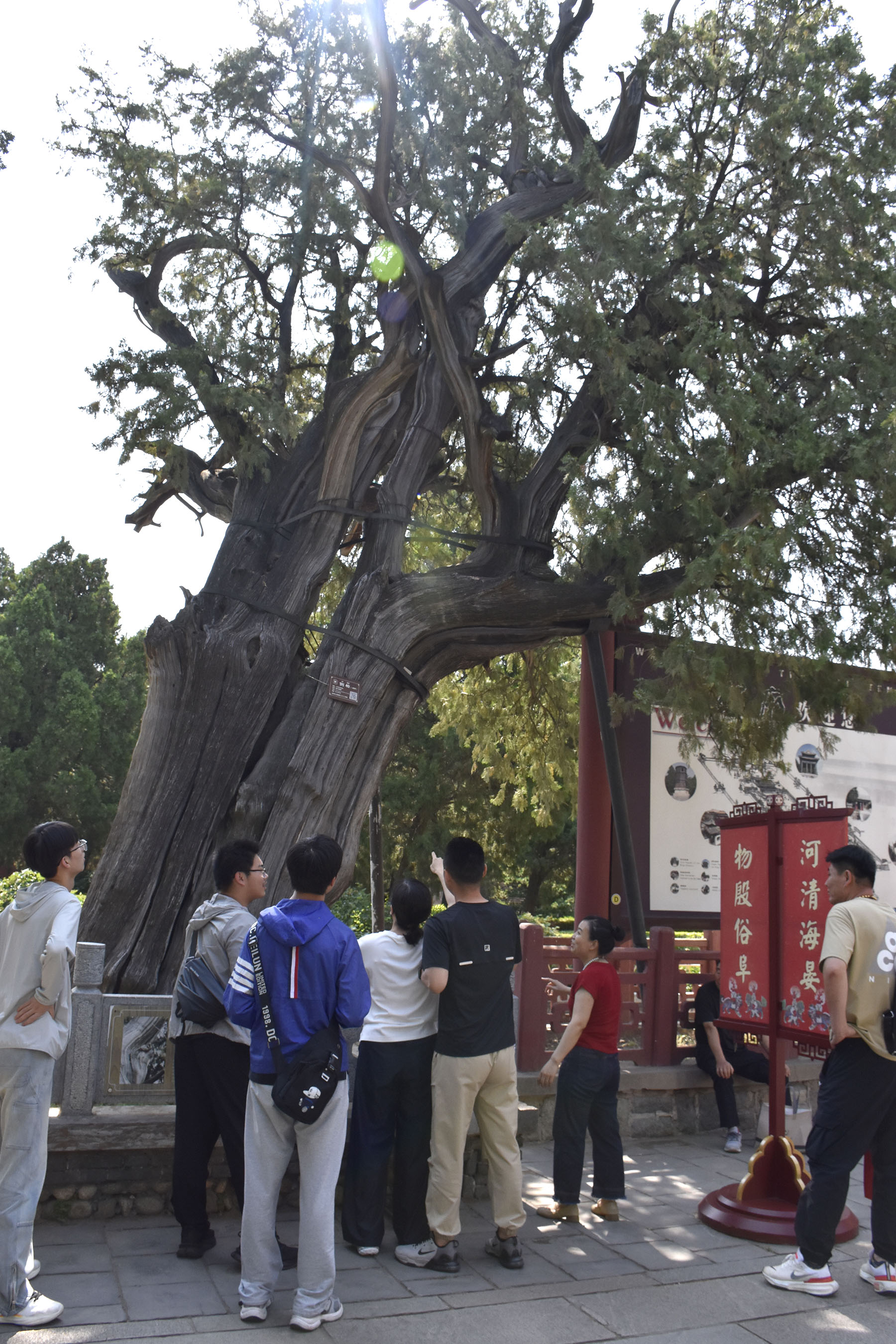
For over 300 years, visitors to the Dai Temple at the foot of Taishan Mountain in Shandong province have been able to find natural respite under the canopy of the great ginkgo tree in the temple courtyard.
Despite its age, the lofty 20-meter-tall tree still remains lush and vibrant, thanks in part to some major tree surgery performed just over a decade ago.
The aftermath of the surgery can still be observed today, with a dozen younger root systems grafted to the base of its trunk. These young roots, each originally a separate sapling, seamlessly integrate with the main trunk before plunging into the soil to nourish their elder.
This root-grafting technique, where juvenile root systems are surgically connected to ancient ginkgo trees, is part of efforts by technicians at the Taishan Mountain Scenic Area Administrative Committee to protect the area's many ancient trees.
READ MORE: Focus on Shenzhen exoskeleton startup after Taishan Mountain debut
As China's first UNESCO World Cultural and Natural Heritage Site listed in 1987, Taishan Mountain is home to 18,195 ancient trees across 39 species. Among these are 23 individual trees that hold the rare distinction of being listed as World Heritage elements, serving as living monuments to China's ecological and cultural legacy.
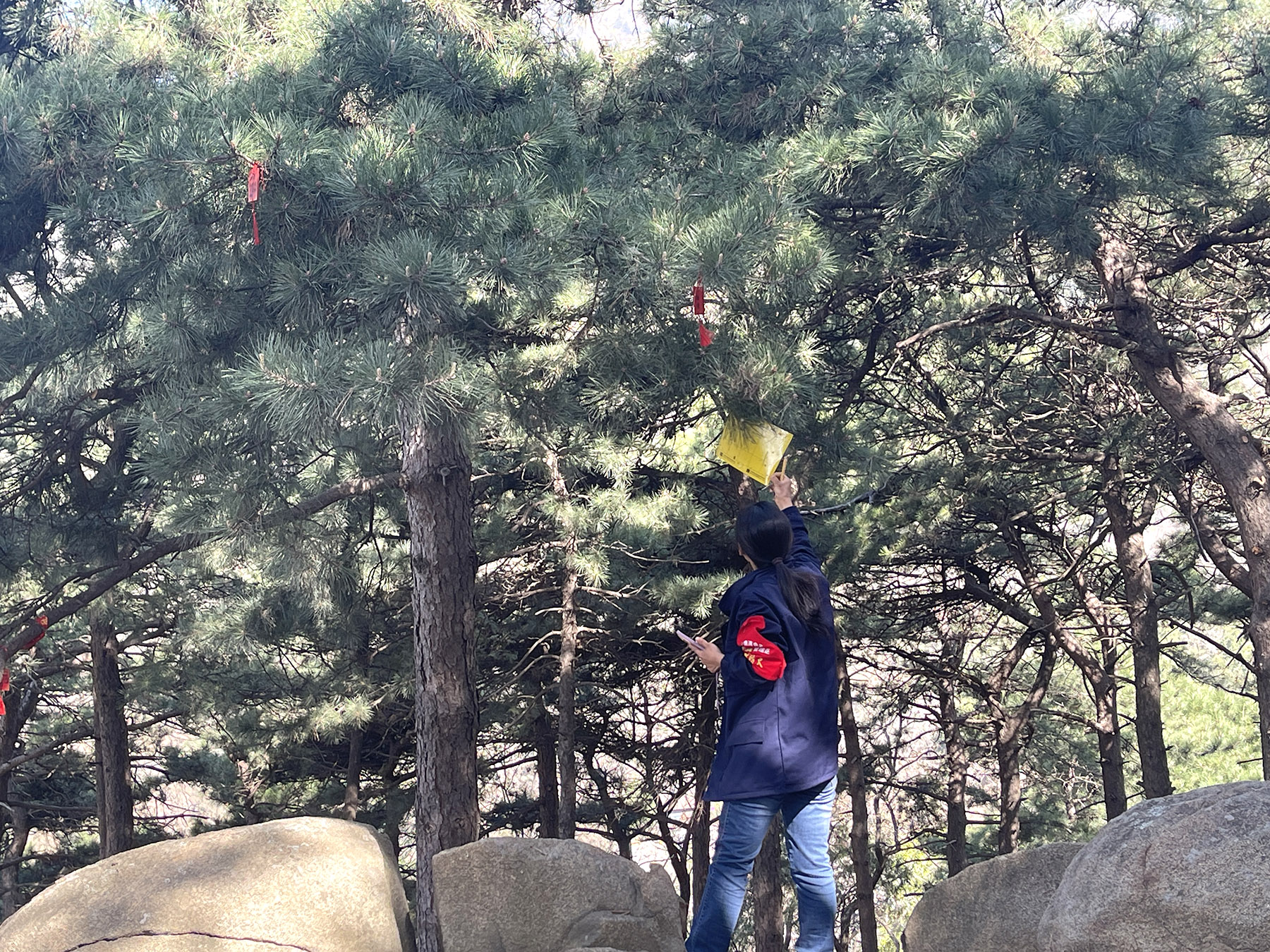
A key element to the preservation of the mountain's ancient trees has been human devotion spanning generations. For decades, dedicated people in the local community have worked to protect these living monuments, ensuring that each of the mountain's ancient trees receives the care it needs to thrive for centuries more.
In recent years, the scenic area's committee has established a comprehensive and scientifically driven management system, which has transformed the mountain into a global model for conserving heritage trees.
The management system aims to ensure light penetration through the canopy, optimal airflow around the trunk, and efficient oxygen in the root zone through loose and porous soil, said Shen Weixing, director of the committee's heritage protection department.
"We also need to pay detailed attention to the trunk and roots, as well as control pests and diseases and prevent fire," he said.
"This system optimizes the trees' growing conditions — balancing soil nutrients, water, air and light — so they can live longer and healthier," he said, adding that each tree has its own unique needs.
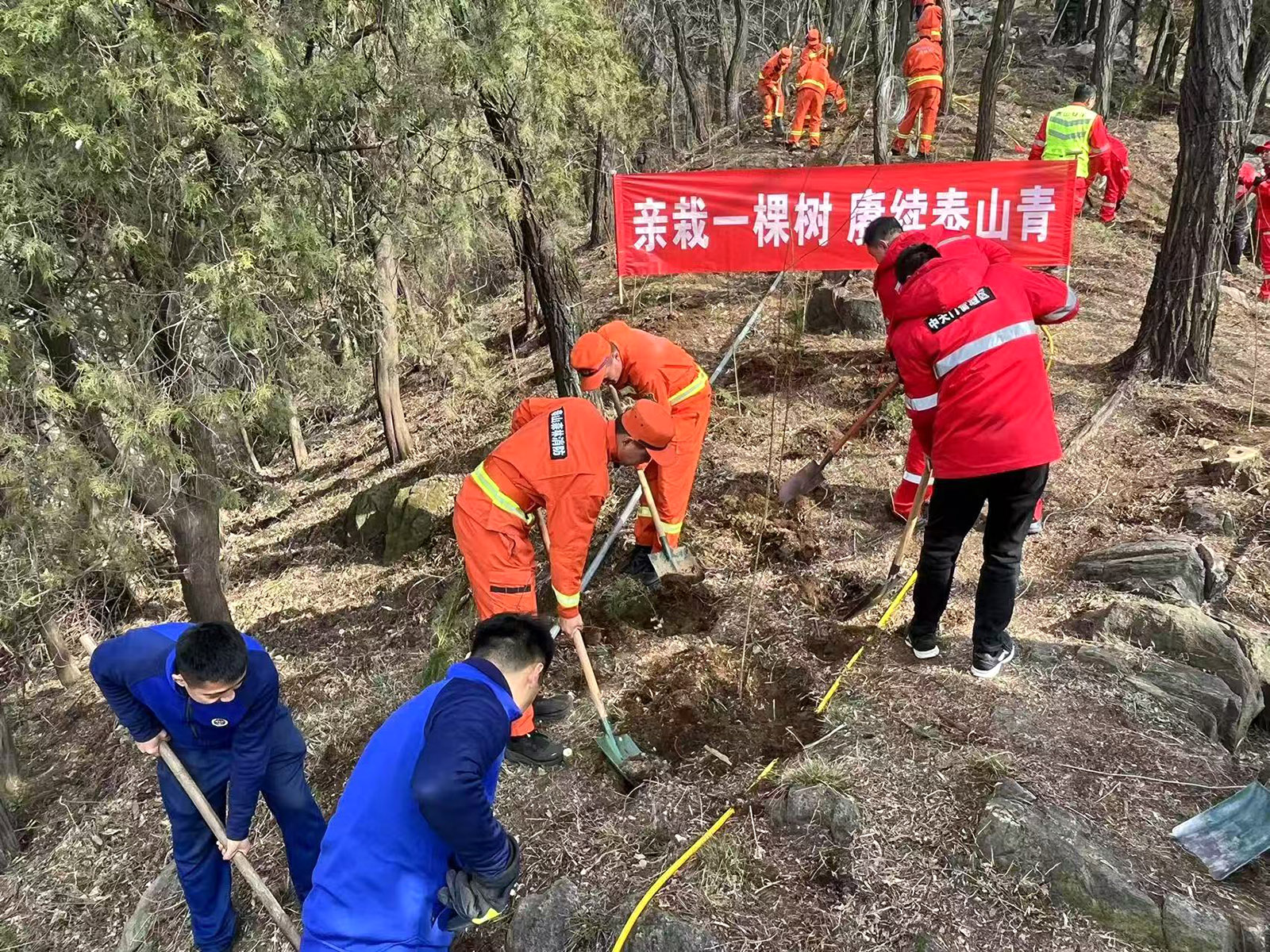
Old trees, new life
"When a tree declines, its roots fail first," said Ma Shengping, who has worked in the committee since 1985 after graduating from Shandong Agricultural University's pomology program, which focuses on the study and cultivation of fruit-bearing plants.
In 2012, they noticed the leaves of a 300-year-old ginkgo tree at the Dai Temple were turning a sickly yellow-gray months before autumn, not the usual vibrant gold of seasonal change.
"After fact-finding and research work, we found the root system was collapsing like a failing heart," said Ma.
In April 2013, they planted 21 four-year-old ginkgo saplings around the ailing tree. Then, using precision grafting techniques, they connected the saplings to the ancient trunk.
"It's like attaching life support," said Ma, who added that the young trees became auxiliary roots, pumping nutrients to their elderly host.
By that September, new emerald leaves had replaced the withering foliage.
Using this method, they have since saved two other ancient ginkgos.
"Initially, nobody dared try this on heritage trees," said Ma. "But when you see leaves returning to health, you know it's worth the risk."
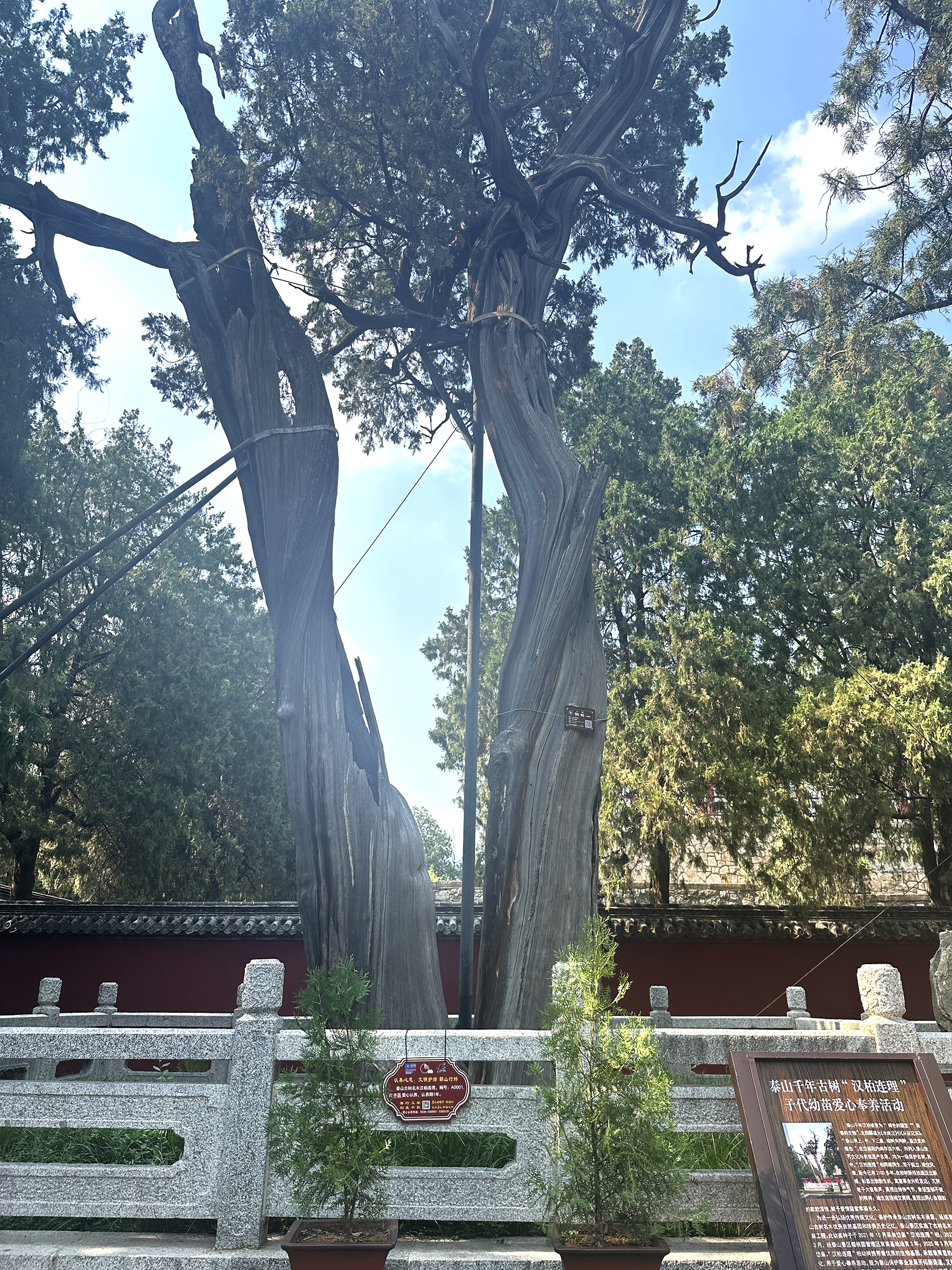
Seedling cultivation
At Colorful Stone Creek, also at the foot of Taishan, Cao Guiping and her team are cultivating the seedlings of the mountain's rarest species — the Taishan mountain ash, a tree species unique to the mountain.
Found 1,120 meters up the mountain's northwestern cliffs, this unassuming tree was first spotted in 1984 by Li Fazeng, a professor at Shandong Normal University, while he surveyed the botanical inventory of the mountain.
Its serrated leaves and ruby-hued berries distinguished it from common mountain ash, leading to its classification in 1986 as a species unique to the mountain, which was also the only one of this species in the world, Cao said.
"It's not easy for its seeds to sprout where they fall, so if we want to have more trees of this species, we need to nurture seeds into seedlings," she said. To rescue the species, the team collected its seeds and started to cultivate the seedlings.
"Every November, we ascend the mountain to collect seeds — the timing is critical, as even slight variations can significantly impact seed quality."

Cao recalled the first expedition in 2022, where colleagues had to be lowered down to the tree by rope in the deep snow. The team spent an entire day collecting precious seeds.
"The seeds collected in 2022 have shown particularly strong growth, with a seedling survival rate of at least 65 percent. Seed viability fluctuates year to year," she said, adding that last year's collection yielded seeds with much lower germination rates.
As the cultivation base for these trees is located at a relatively low altitude of around 200 meters, which is much lower than the altitude where the wild Taishan mountain ash lives, the cultivation team must maintain strict control over growing conditions to ensure the survival of the seedlings.
The team is cultivating over 500 Taishan mountain ash seedlings, Cao said.
"When these seedlings are 5 years old and grow to 1 meter in height, we will attempt to transplant them into the wild to expand the population of Taishan mountain ash," she said.
We also hope to gradually reintroduce them around the mother tree, reuniting the "children" with their parent, she added.
Not far from the Taishan mountain ash seedlings at the creek base are rows of seedlings grown from the seeds of millennium-old trees — each a tiny body bridging past and the present.
These young plants represent the latest success of the efforts made by the Taishan management committee in protecting ancient trees. The project has collected seeds from 30 heritage trees, including the 16 UNESCO-listed specimens, to safeguard their genetic legacy.
In the courtyards of the Dai Temple, there are five towering cypresses, recorded by ancient books as being planted by Emperor Wu of the Western Han Dynasty (206 BC-AD 24) during one of his visits to the mountain. The five cypresses are named Han cypress after the dynasty when they were planted.
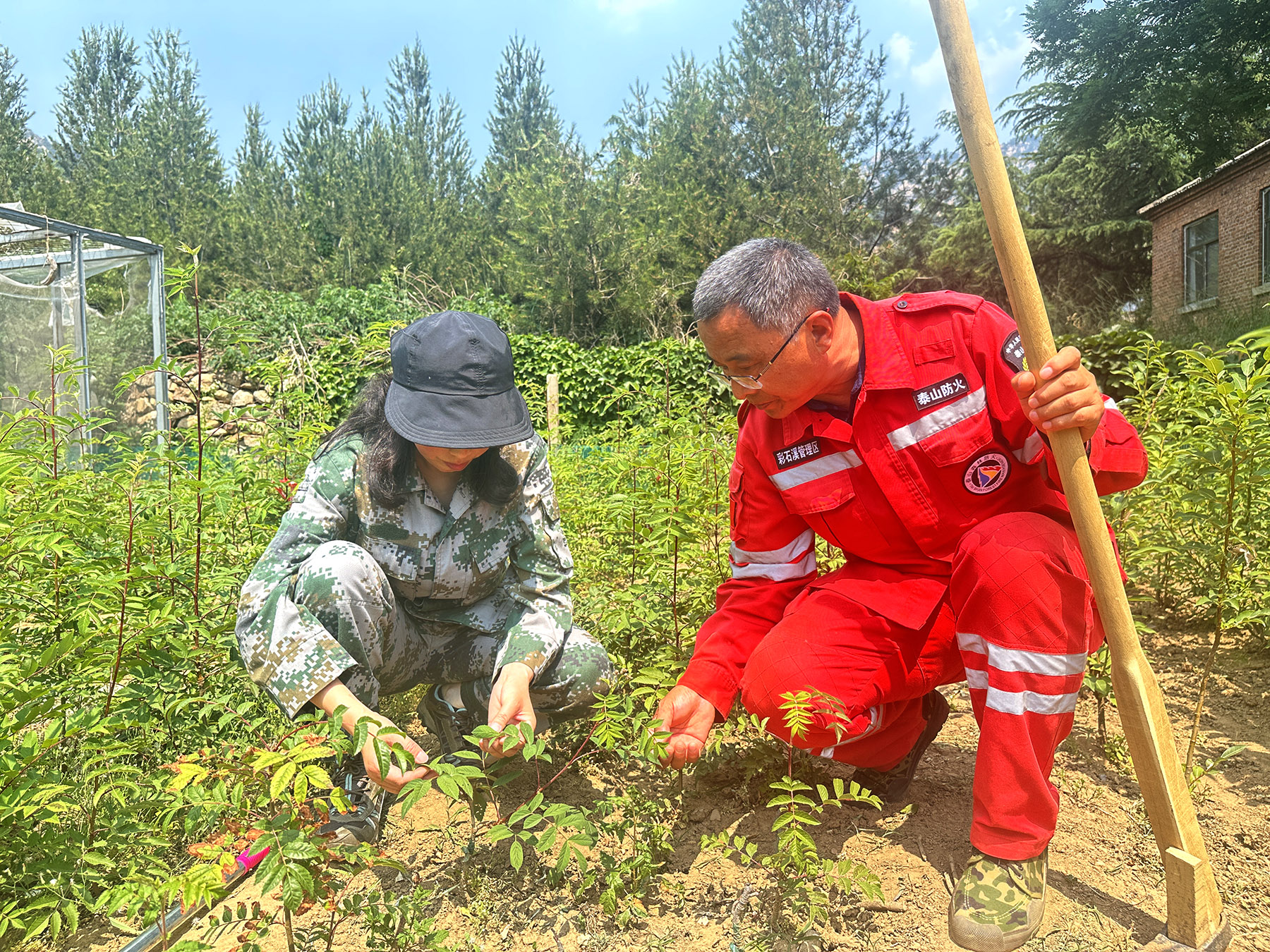
Today, they stand surrounded by their own "children", seedlings cultivated from their seeds.
One of them, known as the Interlocked Han Cypress, tells a story of resilience. Its twin trunks, one 10 meters tall and the other 12.5 meters tall, spring from a single root. The cypress has survived lightning strikes and fires for over 2,100 years. Emperor Qianlong of the Qing Dynasty (1644-1911) sanctified it with a painting and inscribed it in a poem.
"We collected its seeds in autumn, nurtured the seedlings at the cultivation base, and brought them back at a proper time," said Li Xiufen, pointing to a seedling planted close to the Interlocked Han Cypress.
Last year, eight seedlings of Han cypresses cultivated by the committee were sent to Maoling Mausoleum in Shaanxi province — the resting place of Emperor Wu of the Han Dynasty.
ALSO READ: Robotic exoskeletons aid in mountain climbing, elderly care
"It is a homecoming," Li said.
"These trees he originally planted will now guard his tomb anew," she said.
To encourage global participation in protecting Taishan Mountain, one of China's five sacred mountains, the committee has launched a digital platform through which the public can adopt a tree.
"We protect the mountain, as well as the trees on it, like we take care of our children, but we benefit more from it," said Li.
"You see, when visitors look up into the big ginkgo, they can feel the history and the culture of our nation," she said.
Duan Zhuoyan contributed to this story.
Contact the writer at zhaoruixue@chinadaily.com.cn


